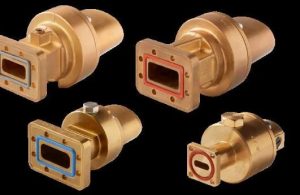Why Use a Waveguide Filter in Microwave Systems?
Critical Role of Waveguide Filters
In the sophisticated arena of microwave communications, waveguide filters play an indispensable role. These devices are designed to selectively allow frequencies within a certain range while blocking others, making them vital for ensuring signal clarity and system performance in microwave systems.

Enhancing Signal Quality
Selective Frequency Transmission
Waveguide filters excel in transmitting specific frequency bands and rejecting frequencies outside of a designated range. This selective transmission is crucial in applications like satellite communications and radar systems, where receiving or transmitting unwanted frequencies can lead to interference and degrade the quality of the signal.
Minimizing Interference
By blocking unwanted frequencies, waveguide filters effectively minimize interference from adjacent channels or external sources. This is especially important in densely populated frequency environments, such as in urban areas where numerous communication systems operate simultaneously.
Improving System Efficiency
Maximizing Bandwidth Utilization
Waveguide filters are designed to maximize the use of available bandwidth by precisely defining the bandwidth used by a system. This ensures that each communication channel operates within its allocated spectrum without spilling over into adjacent bands, thus optimizing the efficiency of the entire communication network.
Reducing Signal Loss
A well-designed waveguide filter reduces insertion loss, which is the loss of signal power resulting from the introduction of the filter into the waveguide. High-quality waveguide filters maintain low insertion loss, typically less than 0.5 dB, thereby preserving the strength and integrity of the transmitted signal.
Applications in Various Technologies
Telecommunication Systems
In telecommunication systems, waveguide filters are used to segregate signals sent and received through the same antenna system without interference. This is vital for maintaining clear communication channels in both mobile and fixed communication networks.
Radar and Navigation Systems
For radar and navigation systems, the ability of waveguide filters to exclude signals outside a specific range ensures that only relevant signals are processed. This precision is crucial for the accuracy and reliability of radar operations, particularly in aviation and maritime applications.
Astronomy and Research
In fields like radio astronomy and scientific research, waveguide filters allow for the precise measurement of electromagnetic signals from space or experimental setups. These measurements often require the isolation of very narrow frequency bands to detect specific phenomena.
Technological Advancements
Customization and Precision Engineering
With advances in material science and manufacturing techniques, waveguide filters can now be customized to meet specific operational requirements. Modern fabrication methods allow for the precise tuning of filter characteristics, ensuring optimal performance tailored to the specific needs of each application.
Conclusion
In conclusion, waveguide filters are essential components in modern microwave systems. Their ability to selectively filter frequencies enhances signal clarity, improves system efficiency, and reduces interference, making them crucial for the reliable operation of communication, radar, and scientific measurement systems. Understanding and integrating these filters is key to advancing technology in various high-frequency applications, ensuring both precision and performance in the fast-evolving world of microwave communications.
